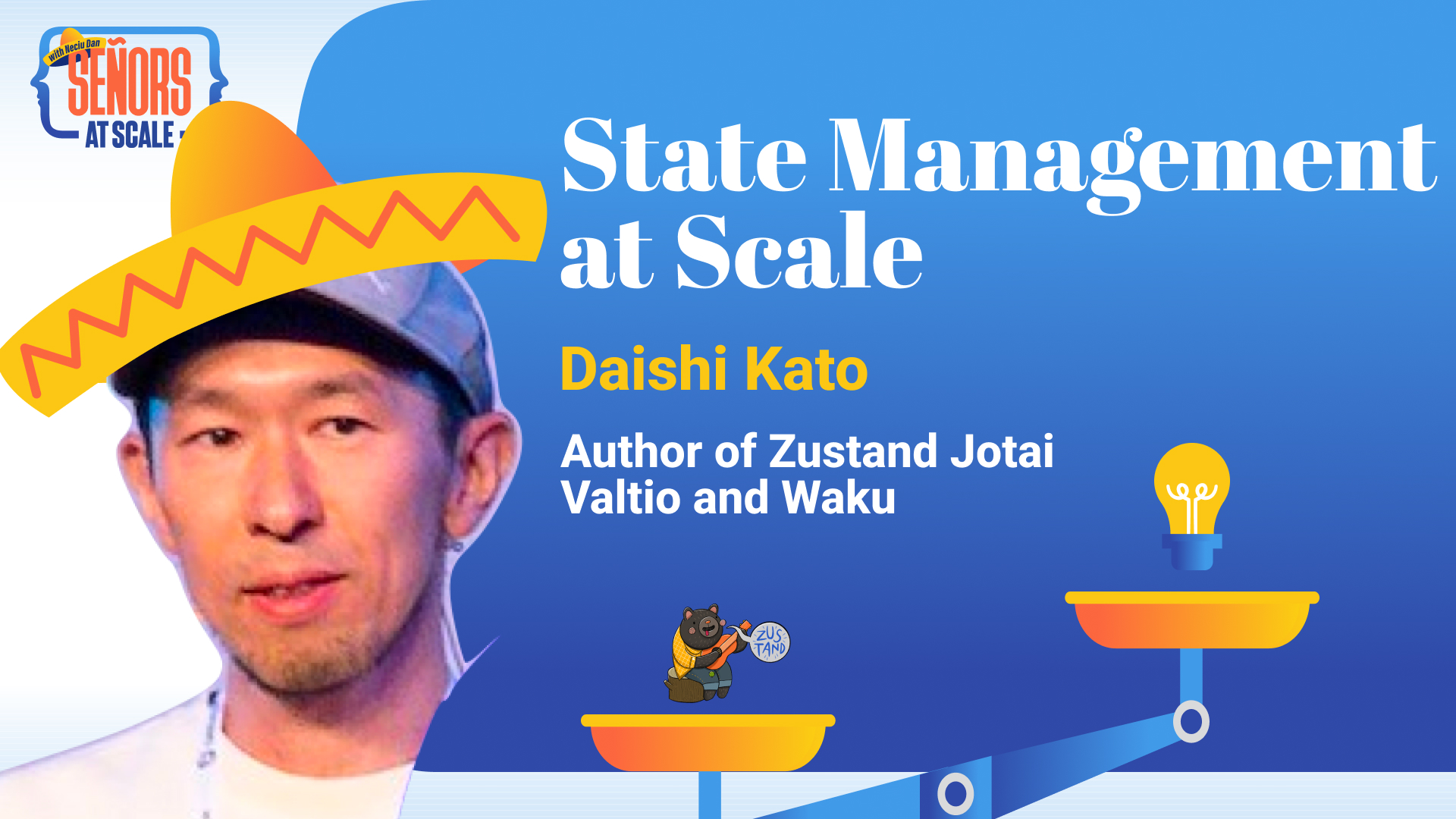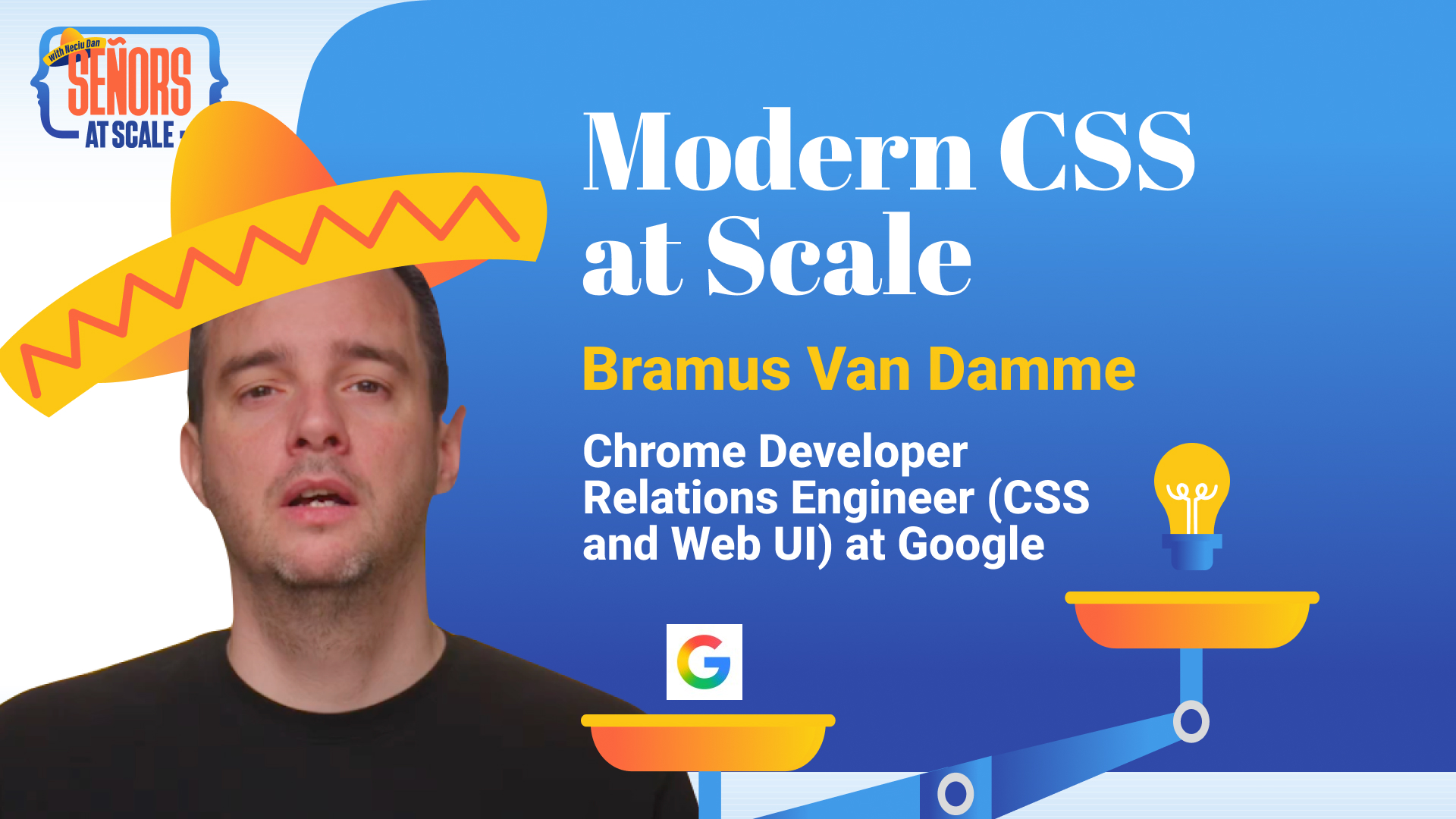Danilo Velasquez
Staff Engineer at Adevinta
In this kickoff episode of Señors @ Scale, host Neciu Dan sits down with Danilo Velasquez — Staff Engineer at Adevinta and longtime frontend performance obsessive.
Main Takeaways from my conversation with Danilo:
Tracking performance manually doesn’t scale. Danilo initially spent 4–5 hours each week gathering Lighthouse scores for dozens of pages. Automating that process with the Lighthouse Node API cut the task to 15 minutes and opened the door to real-time Prometheus integration. The result? A living dashboard that made performance a continuous conversation—not a one-time audit.
💡 Page ownership should align with team ownership. Danilo saw firsthand how abstract “domain boundaries” broke down when multiple teams had partial responsibility for the same pages. His solution: make each team responsible for its own application and page set. When ownership changes, move the code. It’s painful, but clear.
💡 Micro frontends led to micro-messes. In one system, they had 50+ frontend services powering a single feature. It looked modular on paper, but was impossible to maintain. Danilo now recommends grouping apps by team instead of slicing purely by domain—favoring practical boundaries over architectural purity.
💡 Old dependencies are a form of technical debt. Danilo advocates for building as close to the platform as possible—favoring native web components over frameworks when feasible. A five-year-old web component still runs today, but a five-year-old React app might be a minefield of outdated packages.
💡 Platform engineering is a force multiplier. Rather than shipping features directly, Danilo found more leverage in improving CI pipelines, optimizing DX, and standardizing tooling. Helping 10 teams ship better beats building a single product faster. It’s the clearest example of “scaling through others” in engineering.
💡 End-to-end tests are flaky for a reason—and it’s not just the tooling. Danilo points out that many e2e failures reflect real user bugs: delayed renders, missing elements, or race conditions. If your tests fail often, it might be telling you your frontend is too complex, not that Cypress is broken.
💡 Performance regressions should trigger incidents. In Danilo’s org, if a Web Vitals metric turns red, it’s treated like a production outage. That means war rooms, halted deployments, and dedicated fixes. It's a cultural shift: performance isn’t a “nice-to-have”—it’s infrastructure.
💡 Core Web Vitals data needs business context. Most teams track Web Vitals separately from conversion metrics—but that’s a missed opportunity. Danilo recommends wiring performance data into tools like Google Analytics to see if faster LCP actually improves sales, signups, or retention. Without that, you’re optimizing in a vacuum.
💡 Fonts can kill your LCP. One project had 12 separate font files for various weights and styles, all blocking the render. Switching to system fonts massively improved performance with zero user complaints. If users can’t tell the difference—but your metrics can—it’s worth rethinking your stack.
💡 The consent banner might be your LCP—and that’s okay. For EU users, the cookie/consent UI is often the first required interaction. Trying to hide or defer it might break compliance. Instead, Danilo suggests embracing it: load it early, strip down fonts, and make it snappy.
💡 Lighthouse results depend heavily on where and how you run them. Danilo discovered huge swings in scores when Lighthouse ran on shared cloud infrastructure vs. isolated VPS machines. To reduce variability, consider running it on dedicated, stable environments—especially if you’re gating PRs with performance checks.
💡 Long tasks? Try setTimeout(0). If your TTI or FID is struggling, Danilo recommends identifying heavy JS operations and wrapping them in a microtask with setTimeout. It’s a surgical fix—but it can yield major gains by unblocking the main thread faster.
💡 Mentorship isn’t about knowledge transfer—it’s about presence. Danilo believes the best mentors don’t just answer questions—they stick around, ask “why,” and help mentees think for themselves. That kind of leadership builds long-term capability, not short-term productivity.
Episode Length: 57 minutes of pure value
💡 More Recent Takeaways

Señors @ Scale host Neciu Dan sits down with Daishi Kato, the author and maintainer of Zustand, Jotai, and Valtio — three of the most widely used state management libraries in modern React. Daishi has been building modern open source tools for nearly a decade, balancing simplicity with scalability. We dive deep into the philosophy behind each library, how they differ from Redux and MobX, the evolution of the atom concept, and Daishi's latest project: Waku, a framework built around React Server Components.

Señors @ Scale host Neciu Dan sits down with Vlad Khononov, software architect, keynote speaker, and author of Learning Domain-Driven Design and Balancing Coupling in Software Design. Vlad has spent over two decades helping teams untangle legacy systems, rebuild failing architectures, and bring clarity to messy business domains. This conversation cuts through the hype around DDD and microservices, focusing on the mechanics of bounded contexts, coupling, business alignment, and architectural evolution.

Seniors @ Scale host Neciu Dan is joined by Bramus Van Damme, Chrome Developer Relations Engineer at Google. As a leading voice in CSS and Web UI, Bramus dives into the future of the web, breaking down the mechanics, performance, and cross-browser status of transformative new features like View Transitions, Scroll-Driven Animations, Anchor Positioning, and Custom CSS Functions. He offers a rare look into the inner workings of Chrome DevRel, the standardization process through the CSS Working Group, and how the multi-browser 'Interop' effort is accelerating web development.

Señors @ Scale host Neciu Dan sits down with Liran Tal, Director of Developer Advocacy at Snyk and GitHub Star, to unpack NPM malware, maintainer compromise, MCP attacks, toxic flows, and why AI-generated code is statistically insecure without the right guardrails. Liran shares real incidents from the Node and open source ecosystem, how Snyk and tools like NPQ help developers build safer workflows, and why security at scale starts with developers, not firewalls.
📻 Never Miss New Takeaways
Get notified when new episodes drop. Join our community of senior developers learning from real scaling stories.
💬 Share These Takeaways
Want More Insights Like This?
Subscribe to Señors @ Scale and never miss conversations with senior engineers sharing their scaling stories.
